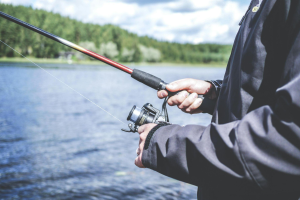
Panama, USAPlanning a fishing trip to Panama can be an exhilarating experience for any angler. With its rich marine biodiversity, warm waters, and stunning landscapes, Panama offers some of the best fishing opportunities in the world. Whether you’re targeting big game fish like marlin and sailfish or looking for inshore species like snapper and roosterfish, careful planning can make your trip successful and memorable. Here’s how to plan a successful fishing trip to Panama:
1. Choose the Right Time of Year
Timing is crucial when planning a fishing trip to Panama. The best time to fish in Panama varies depending on the species you are targeting. Generally, the dry season, which runs from December to April, is considered the prime fishing season. During this period, the weather is more predictable, and the seas are calmer, making it ideal for both inshore and offshore fishing.
If you’re targeting specific species, it’s essential to know their peak seasons:
- Marlin: June to October
- Sailfish: December to March
- Yellowfin Tuna: April to August
- Roosterfish and Snapper: Available year-round, with peak seasons varying by region
2. Select Your Destination
Panama boasts several world-renowned fishing destinations, each offering unique experiences and opportunities. Some of the top fishing spots include:
a. Gulf of Panama
Located on the Pacific coast, the Gulf of Panama is famous for its big game fishing. The waters here are teeming with marlin, sailfish, yellowfin tuna, and dorado. The nearby Pearl Islands also offer excellent inshore fishing opportunities. For a comprehensive experience, consider exploring Panama City fishing charters.
b. Gulf of Chiriquí
Also on the Pacific coast, the Gulf of Chiriquí is known for its diverse marine life and pristine waters. This area is ideal for catching marlin, sailfish, roosterfish, and snapper. Coiba Island, a UNESCO World Heritage Site, is a must-visit spot for anglers.
c. Bocas del Toro
Situated on the Caribbean coast, Bocas del Toro is perfect for those seeking a more relaxed fishing experience. The calm waters are home to tarpon, snook, and various other inshore species.
d. Lake Gatun
For a different kind of fishing experience, consider Lake Gatun, an artificial lake in the Panama Canal. It’s a great spot for freshwater fishing, with species like peacock bass and tarpon.
3. Book a Reputable Fishing Charter
A successful fishing trip often hinges on the quality of your fishing charter. Do thorough research and book a reputable charter with experienced captains and well-maintained boats. Look for reviews and testimonials from previous customers to gauge the reliability and professionalism of the charter service.
When selecting a charter, consider the following factors:
- Type of Fishing: Ensure the charter specializes in the type of fishing you want to do, whether it’s offshore, inshore, or freshwater.
- Equipment: Check if the charter provides high-quality fishing gear and tackle.
- Guidance: Experienced captains and crew can significantly enhance your fishing experience by offering valuable advice and assistance.
4. Plan Your Accommodations
Choosing the right accommodations can enhance your overall fishing trip experience. Panama offers a range of lodging options, from luxurious resorts to budget-friendly hotels and eco-lodges. Some fishing charters even offer all-inclusive packages that include accommodations, meals, and guided fishing trips.
Consider staying at a fishing lodge or resort that caters specifically to anglers. These establishments often provide convenient access to prime fishing spots, and some even have private docks and boats.
5. Obtain Necessary Permits and Licenses
Fishing regulations in Panama require anglers to have the appropriate permits and licenses. Most fishing charters will assist you in obtaining the necessary paperwork, but it’s essential to confirm this before your trip. Ensure you have the correct permits for the type of fishing you plan to do, whether it’s saltwater or freshwater, inshore or offshore.
6. Pack the Right Gear
Packing the right gear is crucial for a successful fishing trip. While many charters provide fishing equipment, it’s always a good idea to bring some of your own essentials. Here’s a checklist of items to consider:
- Fishing Rods and Reels: Depending on the type of fishing you plan to do
- Lures and Bait: Specific to the species you’re targeting
- Tackle Box: With hooks, lines, and other essentials
- Clothing: Lightweight, breathable clothing, a hat, and polarized sunglasses
- Sun Protection: Sunscreen, lip balm, and a long-sleeved shirt
- Personal Items: Medications, insect repellent, and a first-aid kit
- Camera: To capture your memorable catches
7. Prepare for the Unexpected
While planning can minimize surprises, it’s essential to be prepared for the unexpected. Weather conditions can change rapidly, so always have a backup plan. Keep an eye on weather forecasts and be ready to adjust your schedule if necessary.
Additionally, ensure you have travel insurance that covers fishing activities. This can provide peace of mind in case of unforeseen circumstances, such as medical emergencies or trip cancellations.
8. Respect Local Regulations and Conservation Efforts
Panama is committed to preserving its marine ecosystems, and responsible fishing practices are crucial. Familiarize yourself with local fishing regulations, including catch limits and protected species. Practice catch and release whenever possible to help maintain healthy fish populations for future generations.
9. Enjoy the Experience
Finally, remember that a successful fishing trip is not just about the number of fish you catch but also about the overall experience. Take the time to enjoy the stunning scenery, learn about the local culture, and relax. Fishing in Panama offers a unique opportunity to connect with nature and create lasting memories.
In conclusion, planning a successful fishing trip to Panama involves careful consideration of timing, destination, charters, accommodations, permits, gear, and local regulations. By following these steps and being prepared for the unexpected, you’ll be well on your way to an unforgettable fishing adventure in one of the world’s premier angling destinations.
Media Contact
Company Name: Captain Experiences
Contact Person: Jonathan Newar
Email: help@captainexperiences.com
Country: United States
Website: https://captainexperiences.com/

